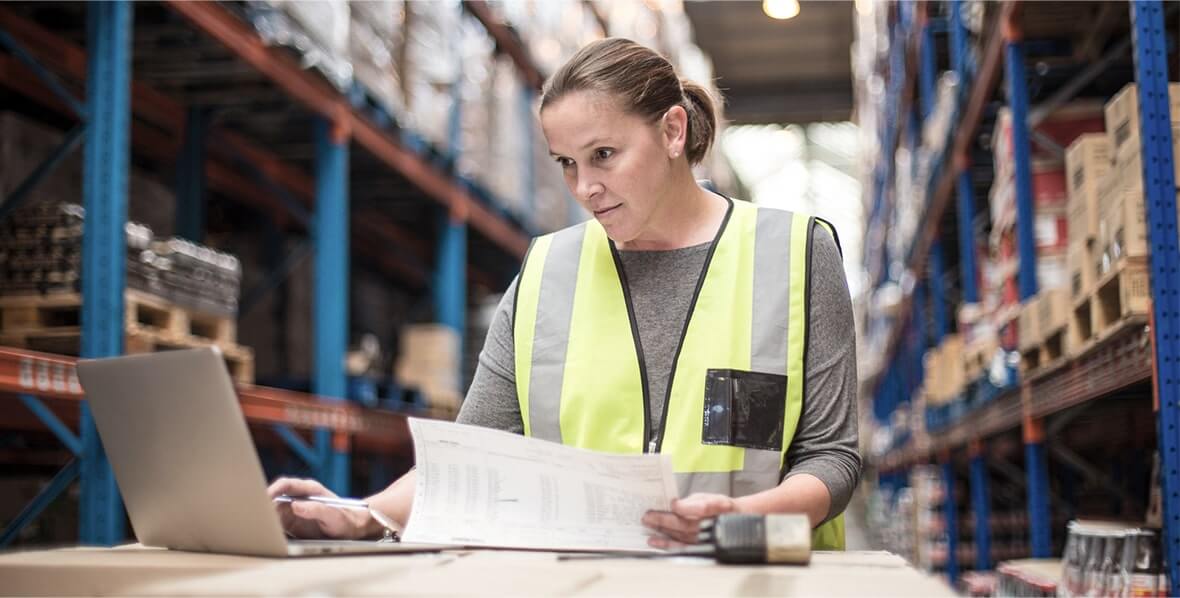
Note: This is the second installment in a two-part series. You can find Part 1 here.
In the wake of the COVID-19 pandemic, many U.S. consumers have embraced e-commerce to get the products they need quickly, conveniently and safely. As a result, businesses are being forced to get creative in how they build a standout customer experience, often without the benefit of their traditional in-store touchpoints.
Consumers’ online spending in June 2020 was 76% higher than it was in June 2019.[1]
During this time of rapid change, many brands are exploring new shipping tactics to stay ahead. But for some businesses, chasing the latest trends—often ones pioneered by major corporations with robust financial resources—may not always be the smartest move.
It’s important to carefully assess which shipping trends will best align with your customers’ needs, as well as your long-term business goals. To gain further insight into the best ways forward, USPS interviewed five leaders in the shipping arena; their expert advice has been compiled below.
Decide Which Shipping Trends Are Right for Your Business
Discover some of the most popular tactics to see which make the most sense for both your business and your customers.
Free shipping has become increasingly popular in recent years—but that doesn’t necessarily mean your brand can (or should) offer it. While it can certainly improve customer satisfaction and provide a competitive edge, it can also erode your profit margins and increase other expenses, including warehousing, marketing/sales, customer service, and labor costs.
For example, free shipping may encourage customers to place more frequent but smaller orders. As a result, you may need more warehouse labor to handle the increased order volume and returns volume. You may also need additional customer service team members on hand to help explain your free-shipping policies and restrictions to inquiring customers.
Analyze your budget to see how much free shipping would increase your business expenses. Consider how much you may need to scale up your workforce and what your company can realistically handle.
Assess Your Free Shipping Options
Remember that free shipping doesn’t need to be all or nothing; you could establish minimum order values that customers must reach in order to obtain free shipping, create limited-time free-shipping promos that encourage customers to act, or create a VIP membership program that includes free shipping.
As an example, say you run a skin-care business with many repeat customers. Because these customers consistently purchase everyday items they use regularly, such as facial cleanser, a VIP program with free shipping may be especially appealing to them. Or you may want to incentivize customers to place larger orders by allowing them to obtain free shipping if they add a certain dollar amount more to their carts.
These tactics can significantly offset the costs involved in offering free shipping. However, keep in mind that larger orders may require larger boxes, resulting in higher dimensional-weight charges; do some careful calculations to see what will work for your goals and your budget.
You may also want to consider direct mail- or email-only promos to offer free shipping to certain customer segments—perhaps sending out a marketing message to those who have recently made a purchase or zeroing in on a certain geographic area using an Every Door Direct Mail® campaign. These campaigns even allow you to target specific demographics within the geographic areas you’re focusing on.
All of these methods can help set you apart and create loyalty; spend some time brainstorming different options to see which make the most sense for your business and your customers. What options will they appreciate the most? Get a good grasp on what’s important to them before making any big decisions. Finally, don’t be afraid to be honest in your communications about why you do or do not offer free shipping; you can mention these policies at your online checkout or within your website’s FAQs.
“Consumers are smart, so communicate with them like adults. They gravitate toward that. Initially, they’ll probably be thinking of your returns policy in terms of dollars and cents, but educate them. Explain to them that shipping isn’t free; tell them what’s going on behind the scenes, and lay out the options you’re giving them.”[4]
— Guy Courtin
Head of Global Alliances for 6 River Systems, Inc., a warehouse automation and fulfillment solutions company
And if you aren’t sure what your customers want, try setting up an incentivized survey to find out directly. Consider interacting with them on social media, fielding questions and engaging in meaningful conversations to see what matters most to them. Also read through your company and product reviews regularly to see what pain points and desires come up most often.
















Rick Blasgen President and CEO of the
Council of Supply Chain
Management Professionals
















Rick Blasgen President and CEO of the
Council of Supply Chain
Management Professionals


It can be difficult to see through the hype when it seems like every other business is offering free shipping. However, you’ll find the most sustainable success by looking for ways to play to your company’s strengths while simultaneously considering your customers’ top priorities.
Pro Tip:
As an alternative to these free shipping tactics, some businesses choose to simply embed the cost of free shipping into the price of an item itself. While this may spur competitors to undercut your prices, it can be very effective for businesses with strong customer loyalty.
Should You Offer Expedited Shipping?
With higher expectations around e-commerce also come higher expectations for faster shipping speeds.
Whether or not expedited shipping will be worth it for your brand will usually depend on the type of products you offer. If you sell “essentials,” such as personal care products or grocery items, speedy shipping may be a big selling point for your customers.
Likewise, if you’re selling expensive items, your customers are probably more willing to pay a little extra for speedy shipping than they would be for cheaper products. Think through these factors carefully, weighing the benefits to the customer experience versus the costs to your business.
Do your customers even care about expedited shipping times? If you aren’t sure what they want, analyze shipping-selection data from your customers’ order history or ask them outright, whether by creating a survey or opening up the question for discussion in your newsletter, social media or other communications.
















Ashley YentzSenior Director, Supply Chain Optimization
















Ashley YentzSenior Director, Supply Chain Optimization


Assess Your Expedited Shipping Options
Keep in mind that you can choose to offer faster shipping for free, or for a fee. If you make expedited shipping an option at checkout, you can simply pass on the added costs to your customers, charging them whatever your chosen carrier charges you. This is often the best solution for packages with heavier weights or unusual dimensions, both of which come with higher shipping fees.
On the other hand, you may want to consider offering free expedited shipping for lightweight items only, cutting down on the carrier surcharges you’ll have to pay. If you go this route, try creating a way for customers to easily view the items that can be shipped quickly for free. To make sure you’re getting the best deal, do your research on different carriers’ surcharges, as well.
Some brands choose to make expedited shipping available only to customers in nearby shipping zones, reducing the costs incurred by the business. This can work well if you maintain a largely local customer base.
If this isn’t the case for your business, establishing a decentralized fulfillment model can play a major role in speeding up deliveries while cutting down on costs. By storing goods in multiple distribution centers, products are closer to the end buyer from the get-go—allowing for faster, smoother deliveries.
This can also create more eco-friendly processes, as shorter delivery distances mean less fuel and fewer trucks—no minor detail, considering that up to 60% of the U.S. public want brands to give an opinion on topics like social justice and climate change.[9]
















Guy Courtin Head of Global Alliances for 6 River Systems, Inc., a warehouse automation and fulfillment solutions company
















Guy Courtin Head of Global Alliances for 6 River Systems, Inc., a warehouse automation and fulfillment solutions company
Finding win-wins like this—meeting customers’ desire to shop more sustainably while reducing your own costs and environmental impact—is key. If you feel stuck, try holding a teamwide brainstorm session to help identify these areas of mutually beneficial overlap.
Pro Tip:
If you decide to offer some form of expedited shipping, make sure every department is up to speed on the new policy. Align on how your brand will promote it in ads and direct customer interactions, as well as how your team will communicate internally. Close communication between marketing/sales and logistics/shipping is key to delivering a cohesive customer experience.
“Logistics professionals must take into account what the sales organization and the customer are expecting, and work closely with the distribution and inventory teams to get the product out to the distribution network as quickly as possible.”[11]
— Rick Blasgen
President and CEO of the Council of Supply Chain Management Professionals
Should You Offer Scheduled Delivery?
Letting customers choose a delivery time that works for their schedule can provide them with a sense of agency and security, and may even help subtly push them to purchase. For example, if a customer wants to receive an item by the next day, messaging on your e-commerce platform can inform them that they only have a certain amount of time to order to ensure they get the product when they want it.
Scheduled delivery is typically more valuable in certain product categories than others. For example, customers receiving meal-kit deliveries that contain perishable food items would likely be much more concerned with setting up established delivery times than customers ordering hair products or accessories.
If you sell very large, bulky or expensive items, scheduled deliveries may also make sense for your business, giving customers a line of sight into when they should prepare for a heavy lift (as with furniture deliveries) or ensure that they’re home to receive a product high in monetary value (such as fine jewelry). With these kinds of items, you must be able to deliver on your promises.
“If you have an expensive mattress being delivered, for example, the goal … is to have the customer sleeping in that bed that night—because many times it is a need-based purchase.”[12]
— Ashley Yentz
Senior Director, Supply Chain Optimization
Weigh these factors and ask yourself some key questions to get started. What are your long-term goals? If they’re centered on eventually creating an on-demand model—in which local customers can order products for immediate delivery—opening up scheduled deliveries is probably a good place to start.
Assess Your Scheduled Delivery Options
Subscription models, whether for meal kits, makeup or clothing, can be a great way to offer added convenience to your customers through scheduled deliveries. These types of deliveries can help create a predictable cash flow for your business, as well as predictable inventory levels.
And if you establish a loyal base of subscribers, subscription models may actually help lower your marketing costs. More specifically, you may be able to reduce the costs of bringing in new customers, which are significantly higher than the costs involved in retaining existing customers.[13]
While some brands operate on a subscription-only basis, you can also provide subscription options in addition to your current e-commerce offerings—providing customers with different choices to suit different needs.
“If you have a product that customers are going to be using all the time, at about the same levels and time intervals, why not offer that in the least expensive way, using a subscription model?”[14]
— Rick Blasgen
President and CEO of the Council of Supply Chain Management Professionals
If this model doesn’t make sense for your brand, you may instead choose to offer scheduled deliveries for certain products only—such as perishable or higher-value items—or only for orders over a certain price point.
To reduce costs, some brands cover the expedited shipping surcharges themselves, but charge customers a fee for setting an established delivery window. Also keep in mind you can charge a higher fee for some delivery windows—such as those later in the evening.
Whatever route you go, make sure it will resonate with your customers. Take the time to understand how they feel about scheduled delivery options—whether by sending out customer surveys, assessing their purchase history, or researching what’s worked for other businesses in your industry. Your customers’ habits and preferences may not always be what you expect.
Ultimately, if you choose to offer scheduled deliveries, maintaining flexibility and accountability across the supply chain is paramount to ensuring customers don’t experience delays or broken promises. Take some time to assess your supply chain from end to end, sitting down with team members from every department to get their input on areas for improvement.
“A delivery won't be successful unless … you [are] collaborative, flexible and able to react when things don’t go [as planned]. [Forward-thinking] businesses are less inclined to reschedule a scheduled delivery, because that’s a lot of pain for the customer. Instead, they look backward and say, ‘Okay, how do we react quickly to make sure that that customer doesn’t even experience what just happened [within the supply chain]?’”[15]
— Ashley Yentz
Senior Director, Supply Chain Optimization
Pro Tip:
Some third-party logistics providers (3PLs) will handle everything from inventory management to packaging to scheduled deliveries, streamlining the entire process—and in turn reducing costs. This can also help level the playing field for small- to medium-sized businesses, allowing them to offer an experience that’s on par with that of larger players.
“There are 3PLs who will bring their technology and expertise to the table for you to leverage, so you don’t have to wait a year to get your finances together for a major tech expenditure. And that investment in technology is not just about savings internally, but also about what it can do for your customer. So these investments can be very fruitful, very quickly.”[16]
— Reg Adams
President of Techdinamics Integrations, Inc., a supply chain software consultancy
Should You Offer Free Returns?
As e-commerce has exploded in recent months, so too have returns—which can be both a burden and an opportunity for today’s businesses.
















Gina AndersonVice President of Solutions & Growth,
Supply Chain Optimization
















Gina AndersonVice President of Solutions & Growth,
Supply Chain Optimization
Free returns help give customers a sense of assurance, which can help to nudge customers who are on the fence to actually make a purchase. Offering free returns may also help reduce cart abandonment. One recent study shows that 49% of abandonments are due to extra costs—such as return shipping—that are too high.[18]
Offering no-cost returns also allows for “bracketing”—in other words, ordering an item in multiple sizes, colors or other variations to see what works best before returning the others. Much like browsing in a physical store, bracketing allows customers to try several options at the same time without having to worry about the price of returns. This can be especially convenient when shopping for clothing, shoes or accessories.
While in-store return rates hover around 8%, the online return rate is at about 25%, according to a study by SaleCycle.[19]
Furthermore, free returns can help encourage repeat purchases and build customer loyalty. Remember that acquiring new customers is typically more expensive than retaining existing ones.[20] So, offering free returns can be a smart way to drive more sales in the long term.
However, the costs involved must be considered thoughtfully. Aside from shipping costs, you must also account for returned-package inspection, as well as any needed repairs or write-offs in the event of damaged returns. Before making any big decisions, it’s crucial to think strategically about whether this makes sense for your business.
Assess Your Free Returns Options
As with all of the shipping trends discussed in this article, free returns can take many different forms. For example, some companies choose to offer free returns only during shopping windows that typically see lower return volumes. By being strategic about when you offer free returns, you can avoid taking on the higher costs typically incurred during peak return windows, such as the period following the winter holidays.
Or you may choose to offer free returns for select items only. For instance, depending on how much it will cost your company to process returned merchandise, it may not be worth it to offer free returns on low-value items. Some companies even find success in offering a discount to customers who agree to keep an unwanted item rather than returning it. A recent report by Baymard suggests it may take only a 5% discount to persuade 39% of shoppers to keep unwanted holiday purchases.[22]
Likewise, you may not want to offer free returns for products with low salvage value or that necessitate a particularly lengthy or complex handling process.
















Reg Adams President of Techdinamics Integrations, Inc.,
a supply chain software consultancy
















Reg Adams President of Techdinamics Integrations, Inc.,
a supply chain software consultancy


Another option is to offer free return shipping for exchanges, while still charging for return shipping when a customer simply wants to make a return and get a refund. This can help provide customers with flexibility and peace of mind; when they know they can exchange an item free of charge, they will likely be more willing to make a purchase. This also helps to protect your bottom line.
Or you may choose to withhold free shipping on sale items; customers will likely still be encouraged to buy based on the product markdown itself. Finally, you can offset the cost of free returns by charging for delivery. This can help balance out your expenses while providing customers with the reassurance that they will not incur additional expenses if they decide to make a return.
Think carefully about what will work for you while making your customers’ lives easier. For some businesses, it even makes sense to use free returns as a foundation for their business model. For example, one major eyewear company popular with millennials offers free returns as a selling point, allowing customers to bracket and try on different pairs of glasses from the comfort of their own homes, without worrying about paying for returns.
Pro Tip:
You can have a solid returns strategy in place, but without the right technology, it can be difficult to see success. Automatic data capture, predictive analytics and cloud computing are all transforming the way companies process returns.
“Antiquated returns ... systems [can not only be very] clunky, but also very expensive. A lot of times, returns have to be immediately marked down. But the right technology can make all the difference.”[26]
— Gina Anderson
Vice President of Solutions & Growth, Supply Chain Optimization
Key Takeaway
As e-commerce continues to alter the world of shipping, many businesses are seeking new ways to provide a positive customer experience that sets their brand apart. While it can be tempting to chase the latest trends, it’s crucial to let the unique needs of your company and your customers guide your decisions.
Popular shipping tactics such as free shipping, expedited shipping, scheduled delivery and free returns can all help elevate the customer experience—but the costs, resources and efforts involved must be seriously considered.
And remember: While these tactics can certainly help, they’re not the only options at your disposal. Innovative packaging, eco-friendly practices, and eye-catching omni-channel marketing can all differentiate your brand from the competition.
As you continue to prepare for an ever-evolving e-commerce landscape, refer back to this article to take stock of your options, gain inspiration from the experts, and find the best way forward for both your business and your customers.
Footnotes
keyboard_arrow_down- [1]Stephanie Crets, “Online sales taper off in July as retail stores reopen,” Digital Commerce 360, Aug. 10, 2020. arrow_right_alt
- [2]“Future of Commerce 2021,” Shopify, 2020. arrow_right_alt
- [3]Ibid. arrow_right_alt
- [4]USPS Delivers interviews with five leading experts in logistics, conducted between May 2020 and July 2020. arrow_right_alt
- [5]Ibid. arrow_right_alt
- [6]“Future of Commerce 2021,” Shopify, 2020. arrow_right_alt
- [7]USPS Delivers interviews with five leading experts in logistics, conducted between May 2020 and July 2020. arrow_right_alt
- [8]“Future of Commerce 2021,” Shopify, 2020. arrow_right_alt
- [9]“The Corporate Social Mind: The Public's Expectations of Companies to Address Social Issues,” The Corporate Social Mind, June 2020. arrow_right_alt
- [10]USPS Delivers interviews with five leading experts in logistics, conducted between May 2020 and July 2020. arrow_right_alt
- [11]Ibid. arrow_right_alt
- [12]Ibid. arrow_right_alt
- [13]Alex McEachern, “Customer Retention 101: Grow Your Business by Selling More to Current Customers,” Shopify Blog, July 9, 2020. arrow_right_alt
- [14]USPS Delivers interviews with five leading experts in logistics, conducted between May 2020 and July 2020. arrow_right_alt
- [15]Ibid. arrow_right_alt
- [16]Ibid. arrow_right_alt
- [17]Ibid. arrow_right_alt
- [18]“44 Cart Abandonment Rate Statistics,” Baymard Institute, 2021. arrow_right_alt
- [19]Graham Charlton, “Ecommerce Returns: 2020 Stats and Trends,” SaleCycle, Jan. 15, 2020. arrow_right_alt
- [20]Alex McEachern, “Customer Retention 101: Grow Your Business by Selling More to Current Customers,” Shopify Blog, July 9, 2020. arrow_right_alt
- [21]E. Mazareanu, “Average time for returning a purchase after the holidays in U.S. 2018,” Statista, Feb. 25, 2020. arrow_right_alt
- [22]"NEW DATA: Discounts Can Help Merchants Reduce Holiday Returns," Pymnts.com, January 2021. arrow_right_alt
- [23]USPS Delivers interviews with five leading experts in logistics, conducted between May 2020 and July 2020. arrow_right_alt
- [24]Graham Charlton, “Ecommerce Returns: 2020 Stats and Trends,” SaleCycle, Jan. 15, 2020. arrow_right_alt
- [25]Ibid. arrow_right_alt
- [26]USPS Delivers interviews with five leading experts in logistics, conducted between May 2020 and July 2020. arrow_right_alt
 search
close
menu
search
close
menu







